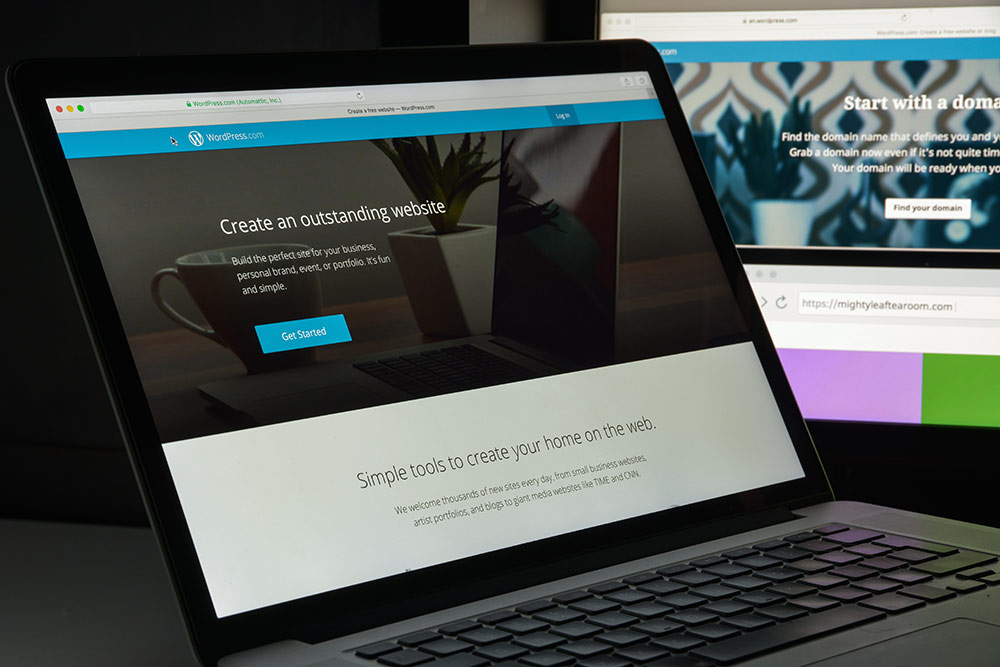If you’re starting to build your website, or perhaps, you already own one, you must know that WordPress is an excellent platform that offers great convenience. Due to its usability and versatility, it makes creating a website accessible to anyone, even for beginners and non-professional developers. Currently, it runs over 37.6% of all websites on the internet, and there’s a good chance that a quarter of the websites you browse every day are powered by it. Aside from business sites and blogs, it’s flexible enough to create eCommerce stores, portfolios, resumes, social networks, forums, and membership sites.
With WordPress’s functionality, the sky’s the limit to building your dream website. But with its overwhelming number of design options, it’s possible to be unaware of some of its outstanding features. Whether you’re a new or a regular user, these 5 great WordPress features will surely step up your website customizing experience:
1. Screen Options
The Screen Options is a drop-down menu button located beside the “Help” menu in the upper right corner of your dashboard. Its main purpose is to allow greater customization in your admin area.
When you click on this pull-down tab, you will be introduced to a list of options that allows you to display, hide, and simplify sections of your page. These extra options include categories, format, tags, featured image, excerpts, and some of the plugin options. You can uncheck a particular box if you want to hide it, or check it if you’re going to show it again. For example, you can uncheck the custom fields and excerpt boxes if you find them unnecessary. You can also customize the number of columns per module, and the number of items shown per page. In turn, it allows greater user control and a more organized workflow.
To save screen options settings, just click the pull-down tab again to make it disappear. This automatically saves your configuration in the database, which means you can open a different browser or a computer with the same applied changes.
2. Revision History
The Revision history might just be a godsend feature for anyone who constantly writes lengthy content. Whether you’re a beginner or a seasoned writer, one way or another, you’ll make changes in your content that you’ll want to take back. If you’ve made drastic changes, you might think it’s impossible to recover them. Fortunately, you can easily access all the earlier changes in your article through the revision history.
The revisions option is located in the “Publish” box. When you click the “Browse” link next to it, it shows all the recent changes you’ve made and allows you to revert to your desired previous version. You can also compare two versions by clicking the “compare any two revisions” box on the upper right corner of the page. This feature offers simplicity if you’ve accidentally deleted a part of your content, and you want to restore it. It’s also perfect if you have multiple writers working on a particular post, as it allows greater navigation of all recorded versions.
3. Markdown and Keyboard Shortcuts
When you often work with loads of content, being able to use shortcut features offers ease and efficiency. If you are already familiar with Microsoft Word, keyboard shortcuts might not be new to you. WordPress’s content editor offers an array of similar shortcuts for maximum productivity. Instead of hovering over the formatting and styling options with your mouse, you can use some of these most common and useful keyboard shortcuts:
Ctrl + ___
- c … to Copy
- v … to Paste
- a … to Select all
- x … to Cut
- z … to Undo
- y … to Redo
- u … Underline
- k … Insert/edit link
On the other hand, the markdown feature lets you compose posts; and edit formatting with the use of special characters or punctuation marks. If you’re not familiar with the web language, HTML, Markdown allows you to create a richly-formatted text instead of the HTML syntax. You can enable this in the WordPress settings through the following steps:
- In WP-Admin, go to Settings → Writing.
- Check the checkbox next to “Use Markdown for posts and pages.”
- Click Save Changes to activate Markdown on your site.
For you to understand this feature clearly, visit the official support website of WordPress. They provided a 10-minute tutorial on how to use the Markdown feature.

4. Post Scheduler
In generating views for your blogs, posting at the right times makes a huge difference. Generally, the so-called internet rush hour, or the peak traffic hours, is around 7 pm – 9 pm, since it’s about the end of everyone’s day. However, you may not be regularly available during these hours. Perhaps, you’re on a dinner date around 7-9 pm, you need not post a blog in the midst of munching your steak. Post scheduling makes it possible.
This feature is not widely noticeable, especially for new users. You can locate this under the ‘Document’ tab. Below ‘Status and Visibility,’ you’ll find the ‘Publish’ option. Beside it, click the ‘Immediately’ link. Afterward, a date and time picker will appear. Once you’ve set your desired time and date, the schedule button will appear. Just click it, and WordPress will automatically publish your post on your desired date. Post scheduling would be a big help for bloggers with different time zones than their readers. With it, you won’t have to wait until late midnight or very early in the morning to post, because this feature can do it for you.
5. Hidden Secret Options Page
Everything has its little secrets; it’s just a matter of discovering where they are. Here, you’re about to access one.
The hidden secret options page contains all the vast and commonly inaccessible settings for your WordPress site. While some of them are already found on your Settings menu, most are more complex options. It contains all core, plugins, and theme settings stored in your database. While it may sound cool, this feature can make or break your website. Hence, it is not recommended for new users to alter them—unless it’s vital, or you are savvy enough to do so. If you ever find the need to utilize this, one way to access it is to install the Show All Settings Menu plugin.
Takeaway
The world of digital connectivity heightens the need for a reliable and accessible website creation tool. WordPress is indeed becoming the backbone of web development. Whether you need help in growing your e-commerce or optimizing your content views, you need a great service provider like Salt Manage to bring your WordPress management up to speed.
